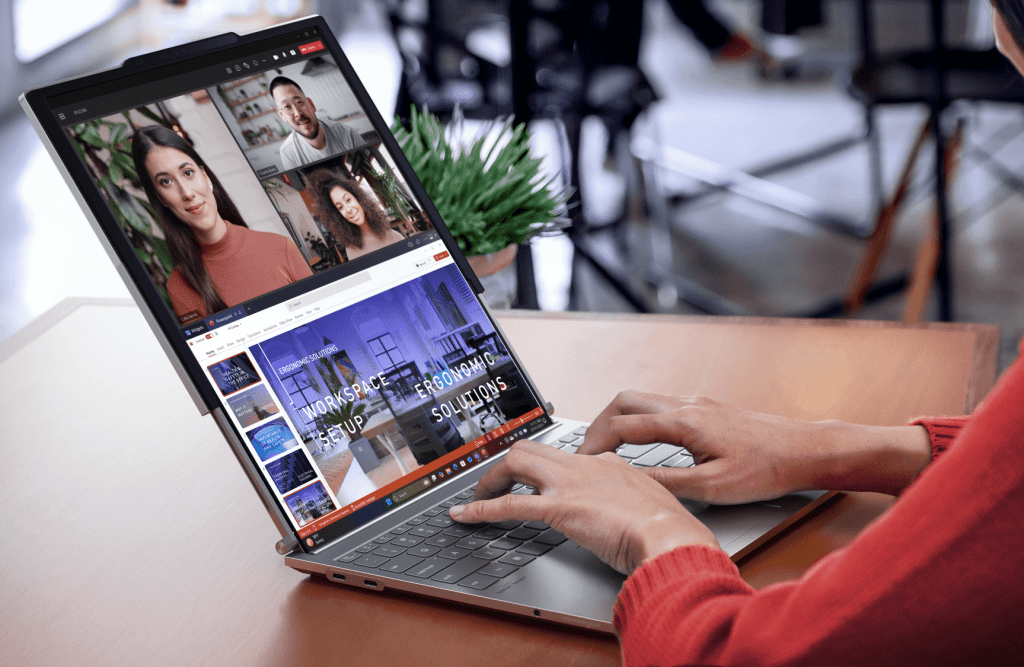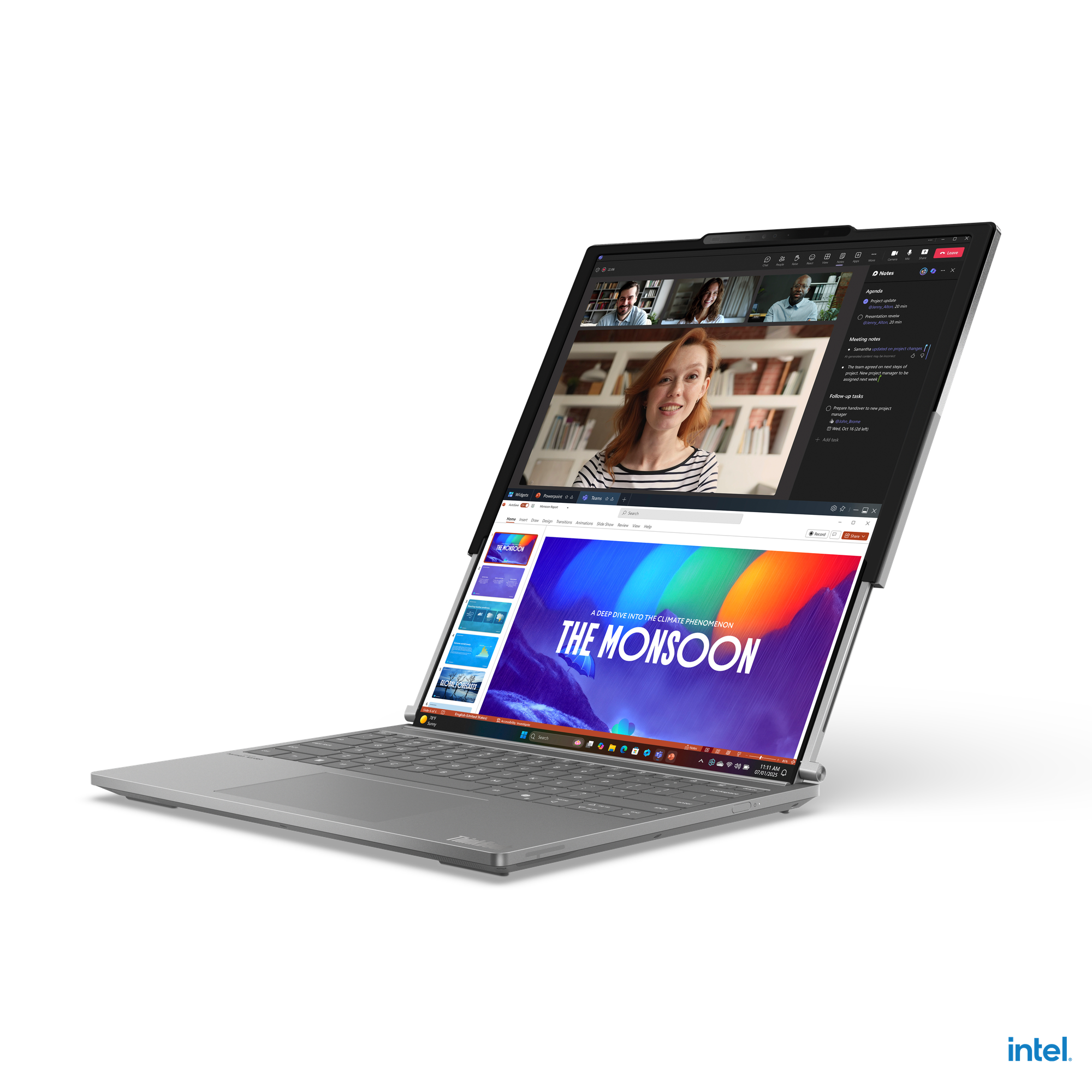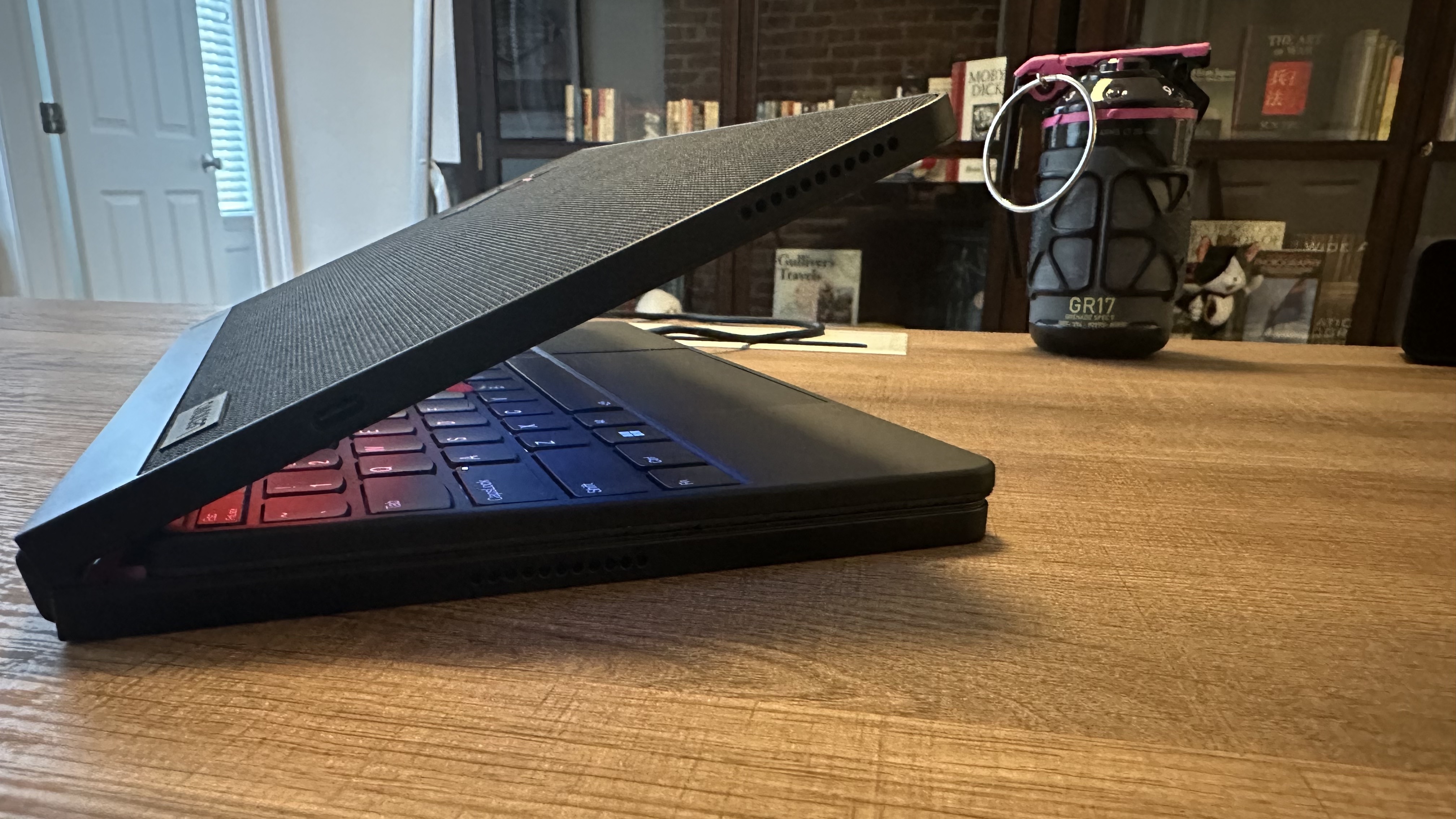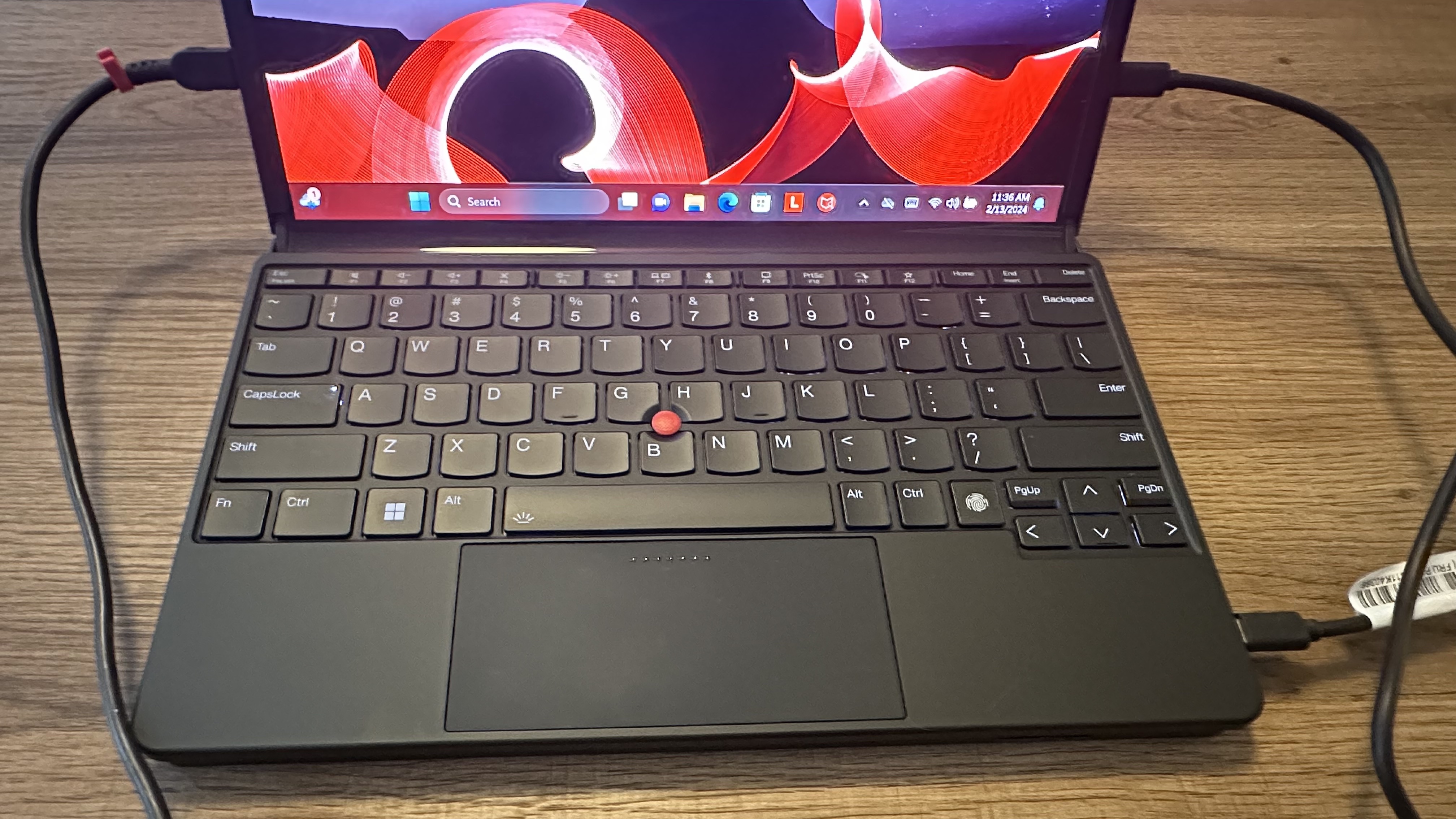
2025 has already seen a host of PC display innovations, including a folding monitor from Samsung, an Asus monitor that integrates Google TV, and 500Hz OLED gaming monitors from a number of companies. And when it came to laptop displays, both ASUS and Lenovo announced second-generation dual-screen laptops in their Zenbook Duo and Yoga Book 9i lines. However, Lenovo, which released the first laptop with a foldable screen in 2020, the ThinkPad X1 Fold, again claimed bragging rights with a new laptop that has a rollable screen, one which extends up from the base of the laptop with the press of a button or a gesture.
The resulting screen area grows from 14” in its native state to 16.7” in its extended state, adding about another third to its display area and shifting from a landscape orientation to a portrait one. The portrait orientation is ideal for working with websites, PDFs, and even watching Instagram reels. The extended display’s aspect ratio is 16x18 (or two stacked 16x9 monitors), the same aspect ratio as LG’s larger DoubleUp PC monitor, which I've praised for its productivity-boosting properties previously.
Lenovo’s rollable is shipping by March 31, 2025, as the ThinkBook Plus Gen 6. While it's a less evocative name than ThinkPad X1 Fold, the model typically associated with Lenovo's foldable PCs, the ThinkBook Plus family has had a long association with Lenovo’s forays into novel screen technologies, particularly e-paper displays. Plus, the ThinkBook line, geared to small businesses, doesn’t promise quite the durability of the ThinkPad brand when it comes to water resistance and other metrics. With that said, I believe foldables from Lenovo and other PC companies are going to feel the heat from rollables for three key reasons.

1. Back to basics with a big screen bonus
First, unlike today’s dual-screen and foldable laptops that rely on Bluetooth keyboards and require some deconstruction in order to take full advantage of their display area, the rollable looks and works like a typical clamshell laptop in its compact state. When opened from the clamshell, you start in the 14” mode; this is also true of foldable and dual-display devices that make half of their display area available when used in their default clamshell mode. However, pressing a button on the keyboard or using a hand gesture to start the display extension takes seconds.
Compare that to repositioning the Bluetooth keyboard and manipulating the screen or screens on foldable and dual-screen laptops. While there are dual-screen laptops that offer a fixed keyboard, like GPD’s Duo laptop, it must still be manually adjusted to face both screens toward you. There's no question that rollable laptops offer a fair simpler solution.

2. Thinner and lighter
Second, a rollable laptop is significantly thinner than a foldable one. Regardless of whether the keyboard can be stored within the folded display or is carried outside of it, a foldable must usually contend with three layers instead of two. Also, because the logic board and battery must support the foldable in tablet mode, the screens are relatively thick for a laptop. The ThinkBook Plus Gen 6 weighs 3.73 pounds — hardly thin and light, but a nice savings compared to 4.2 pounds for the X1 Fold 16 with its keyboard.

3. No more port problems
Third, because foldables can be used in either orientation and, when expanded, rest on one of four sides, manufacturers must place ports in potentially awkward locations that can result in cables sticking up from the top of the device, depending on the device’s “pose.” (Offering at least one rear-mounted port, similar to most desktops, or a way to channel cables across the bottom of the device could alleviate this.)
Potential bumps in the road for rollables
Of course, there are drawbacks to rollables, certainly at least this first crack at one. The ThinkPad Plus Gen 6 starts at $3,499; that’s about $1,000 more than Lenovo’s ThinkPad X1 Fold 16, which has a 16.3” display. Second, if you want a large tablet-like experience, including the ability to use the full size of the display in landscape mode, the rollable can’t do that. That said, as the rollable display extends, it shifts from a landscape display to a portrait display, so it does offer both orientations, just not at full size. Third, the rollable relies on a motor to handle its expansion and contraction. While Lenovo says it has tested the motor to ensure it can have a long service life, there is always the risk it could break. Dual-display laptops don't face this problem, but foldable laptops have durability concerns of their own.

What's next for the rollable laptop?
Much like early electric and hybrid cars had designs that intentionally stood out from most of what was on the road, the first foldable and dual-screen displays attracted considerable attention just for curiosity about their novelty.
That's not the case for the ThinkPad Plus Gen 6, at least unless its display is extended. The extra screen real estate it affords is there when you need it and out of the way when you don’t. While they will face their own challenges, rollable laptops certainly seem to iron out a lot of the creases in foldable laptops. We'll find out soon enough if the reality of using the ThinkBook Plus Gen 6 matches my vision for it when it rolls out by the end of March 2025.







